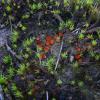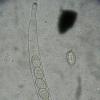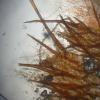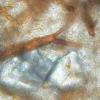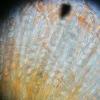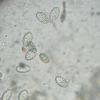
12-02-2015 23:42
 Miguel Ángel Ribes
Miguel Ángel Ribes
Another Hymenoscyphus, now on pinecone of Pinus sy

06-02-2015 12:29
 Blasco Rafael
Blasco Rafael
Hola, tengo esta muestra recogida en rama caida de

11-02-2015 00:47
 Miguel Ángel Ribes
Miguel Ángel Ribes
Good nightI have two different collection of Hymen

12-02-2015 17:14
 Blasco Rafael
Blasco Rafael
Hola, tengo lo que creo es un Hysterobrevium, lo m

08-02-2015 16:42
Lepista ZacariasI would like to have your help to identify this Sc

10-02-2015 00:23
 Jenny Seawright
Jenny Seawright
Hello all, This seems to be Propolomyces versicolo

11-02-2015 08:39
Bonjour. Je ai un rassemblement de 02.02.2015 de

09-02-2015 16:47
 Carlo Agnello
Carlo Agnello
Dear FriendsI want to show a nice discovery of pin

09-02-2015 17:36
Chris JohnsonGreetings,Gregarious colony on the bark of a dead

:-)
When making micropics, make sure to use Cotton Blue preparation, especially with mature ascospores. The apothecium whose sections readily ejected spores when observed in tap water with no pressure applied should be used for subsequent CB preparation so that you can be sure you are dealing with completely developed spores. It is critical for identification of an Scutellinia species. When making CB prep. make sure you also include finely sectioned margin. The contrasted marginal hairs would reveal also the structure of their bases - also crucial for identifying the species!
I will also send you an e-mail soon regarding our older issue!
Cheers,
Neven

Is it found in Netherlands ? Near sea ?
After your first microscopic research, is it possible to ask you a part of your collection ?
We'll look forward your microphotos.
Read you soon,
Beñat
Unfortunally i do not have CB yet, hopefully thursday. But i made micropictures anyway. The ascus is 275 long. SPores seem to be larger then mentioned, 22.5 * 12.5. The hairsbase is bifurcate
ps Neven i loke forward to youre mail!

It's difficult to say anything just with this. Scutellinia is a difficult genus. It is important to have :
- sporal ornementation (in CB, like Neven said)
- hairs measures
- hairs base (here, we can see bifurcate but are you sure that all have bifurcated bases ?)
Your spores measurements can't help us because 20-22 x 12 are the most common measures in this genus...
Read you later,
Beñat
